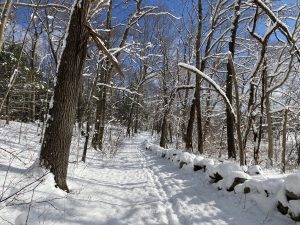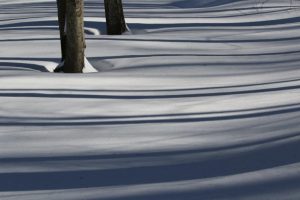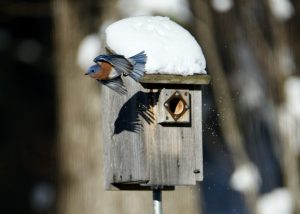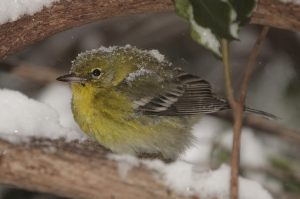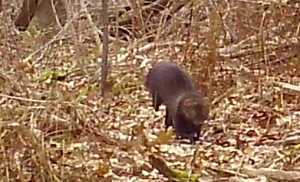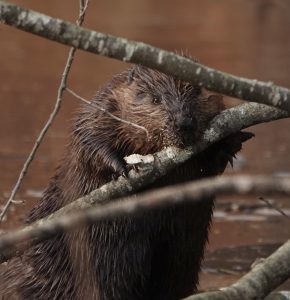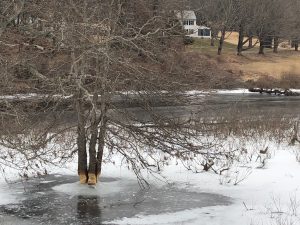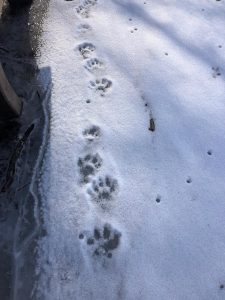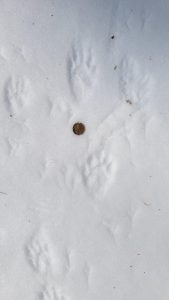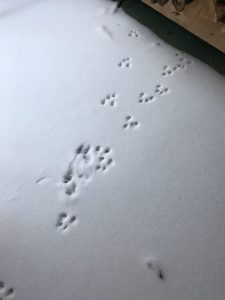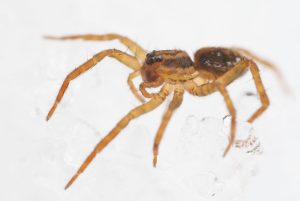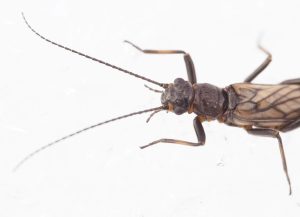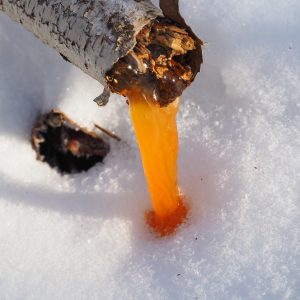Written by Gwyn Loud for the Lincoln Land Conservation Trust. She welcomes your sightings and questions at 781-259-8690 or gwynloud555@gmail.com.
Ms. G, the official Massachusetts groundhog, who lives at Drumlin Farm, did not see her shadow on Feb. 2. If folklore is correct, this means that spring will arrive early this year. Time will tell. A blizzard on January 28-29 dumped about a foot of snow on us (it was hard to measure due to wind and drifts) followed by nights of bitter single-digit cold. Freezing rain and sleet came on February 4. Lawns turned into “white concrete”, walking was treacherous and I felt sorry for birds and mammals which needed to burrow through snow for food or protection. The swings in temperature continued, giving us 58℉ on Feb. 12 followed by snow all day the following day. But the sunlight lingering later each afternoon lifts the spirits and we know that the spring equinox is only six weeks away. Clipped twigs of forsythia blooming on my kitchen counter are a bright harbinger of what lies ahead.
Sugaring season will soon be here as sap rises in the sugar maples and climate change makes the season start earlier. Quoting from a Cornell Cooperative Extension newsletter, “Here’s how it works: During the periods when temperatures rise above freezing, positive pressure develops in the tree. This pressure causes the sap to flow out of the tree through a wound (tap hole). During cooler periods, when temperatures fall below freezing, negative pressure (suction) develops, drawing water into the tree through the roots. This replenishes the sap in the tree, allowing it to flow again during the next warm period. Although sap generally flows during the day when temperatures are warm, it has been known to flow at night if temperatures remain above freezing. Well before colonists began sugar maple tree growing in this country, Native Americans tapped the trees for their sweet syrup and used the sugar made from it for bartering. Their method of sap harvesting and syrup making is still used today!”
Each week more birds are starting to sing their spring calls and songs, including woodpeckers drumming, cardinals singing “cheer cheer”, and chickadees calling “fee bee”. Birds (and red and gray squirrels!) have been busy at feeders and several people have written about the pleasure of seeing bluebirds feeding, as many as eight at one residence on Hawk Hill Rd. Birds seen recently at Drumlin Farm include a brown creeper, sharp-shinned hawk, golden-crowned kinglet, 25 white- throated sparrows, two pileated woodpeckers, hermit thrush, common raven, and hairy woodpecker.
More over-wintering robins have been reported lately but it will be many weeks before we see migrating flocks of robins coming from the south. By the end of February, however, we are likely to see and hear the first red-winged blackbirds arriving. Listen for their raspy “conk-a-ree” calls from wet meadows. Various hawks have been observed, including Cooper’s hawks looking for prey near bird feeders, and red-tailed hawks soaring over fields. A Winter Street resident was surprised to see a peregrine falcon sitting in a tree near the house, certainly not a normal “yard bird”. Owls, especially great-horned owls, are hooting a lot in courtship and territorial behavior, usually in pre-dawn or early evening hours. They are very early nesters and may already be incubating eggs when this column goes to press. The great-horned owls do not build their own nests but use existing nests made in a previous season by hawks or crows, often high in white pines.
Recent snow has given us the opportunity to see all sorts of animal tracks, which tell stories of who was headed where, how fast, and how recently. A unusual mammal sighting was of an ermine, which is the name for a weasel when its coat turns white in the winter. It was seen in a surprising place: dashing across the homeowner’s living room before running outdoors! The home, on Concord Rd., is close to Polebrook, which is a wildlife corridor. Video of Ermine by Sam Kupperstein. Over the past month at least four fishers have been spotted in different parts of town. Coyotes have been howling at night; mid-February is their breeding season. Local beavers have been living up to their “busy as a beaver” reputation, as throughout the winter they are active chewing down trees to provide food for the beaver family in their lodge. Beavers observed in Heywoods Meadow seemed unfazed by being videotaped. Video of Beaver at Heywood’s Meadow. By Jenifer Burckett-Picker. Beavers have built a fairly new lodge by a pond on Winter Street near the Waltham line, which may require a “beaver deceiver” installation to keep the beavers happy while also preventing flooding.
With snow on the ground one does not usually think about insects but Norman Levey has been out with camera in hand, looking for insects and other arthropods. He has found wolf spiders, stoneflies and even a grasshopper on the snow, a good reminder that very small forms of wildlife are essential parts of food chains and ecosystems. He also found a nature mystery: a frozen orange flow coming from a rotten birch log, possibly from tannin or other chemicals resulting from wood decay.
An upcoming citizen science opportunity is the annual Great Backyard Bird Count on Feb. 18-21. As explained by National Audubon, “The Great Backyard Bird Count (GBBC) is a free, fun, and easy event that engages bird watchers of all ages in counting birds to create a real-time snapshot of bird populations. Participants are asked to count birds for as little as 15 minutes (or as long as they wish) on one or more days of the four-day event and report their sightings online at birdcount.org. Anyone can take part in the Great Backyard Bird Count, from beginning bird watchers to experts, and you can participate from your backyard, or anywhere in the world.” I encourage you to participate!
The February full moon, often called the Snow Moon, will occur on February 16. It has other names, however. As explained in the Old Farmer’s Almanac, “Names for this month’s Moon have historically had a connection to animals. The Cree traditionally called this the Bald Eagle Moon or Eagle Moon. The Ojibwe Bear Moon and Tlingit Black Bear Moon refer to the time when bear cubs are born. The Dakota also call this the Raccoon Moon, certain Algonquin peoples named it the Groundhog Moon, and the Haida named it Goose Moon. Another theme of this month’s Moon names is scarcity. The Cherokee names of Month of the Bony Moon and Hungry Moon give evidence to the fact that food was hard to come by at this time.”
© Gwyn Loud



